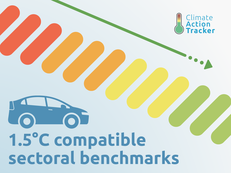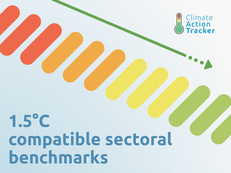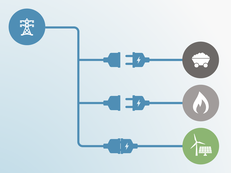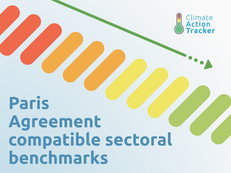Publications (India)
As the climate crisis worsens, the warming outlook stagnates
Despite an escalating climate crisis marked by unprecedented wildfires, storms, floods, and droughts, our annual global temperature update shows global warming projections for 2100 are flatlining, with no improvement since 2021. The aggregate effect of current policies set the world on a path toward 2.7°C of warming.This three-year standstill underscores read more...
Decarbonising road transport: light-duty vehicles
The broad strokes of a Paris Agreement-aligned roadmap are clear: we need to roughly halve emissions by 2030, achieve net zero CO2 emissions by 2050 and net zero greenhouse gas emissions soon after. However, the details at the national and sectoral level are often still unclear. In this report, the read more...
Decarbonising steel: national circumstances and priority actions
Iron and steel production currently contribute around 7-8% of global greenhouse gas (GHG) emissions, so decarbonising this sector is fundamental to reaching net zero and meeting the Paris Agreement's 1.5°C warming limit.While decarbonising the steel sector is now technically feasible, different countries face different challenges in making this happen at read more...
Pulling the plug on fossils in power
Decarbonising the power sector is a key step on the road to net zero as it will cut both power sector emissions and help push fossil fuels out of the buildings, transport and industrial sectors as these sectors electrify.To help track global and country level progress, the Climate Action Tracker read more...
Paris-aligned benchmarks for the power sector
As the world moves to address the climate crisis and journey towards a zero-carbon future, roadmaps which demonstrate the pathway to cut emissions fast, fairly and effectively are essential.The broad strokes of a Paris-aligned roadmap are clear – we need to roughly halve emissions by 2030, achieve net zero CO2 read more...
Natural gas in India: A pathway towards reducing India’s dependency on gas
In this report, we have analysed India’s potential savings on gas imports and an improved trade balance in a 1.5°C compatible low gas scenario. Our analysis shows that if India aligns with a 1.5°C compatible pathway, it would lead to gas import savings of USD 9-24 bn in 2030 under read more...
How a renewable energy COVID-19 recovery creates opportunities for India
India has been severely impacted by COVID-19. As the country emerges from this challenging time, it has the potential to accelerate its transition to a zero emissions economy. The Indian government has earmarked at least USD 325bn—corresponding to approximately 11% of the country’s gross domestic product (GDP) in 2019—to fund read more...
Decarbonising the Indian transport sector: pathways and policies
The CAT explored a new approach to understanding opportunities for sectoral decarbonisation, using the example of the transport sector in India. To hold global average temperature increase to 1.5°C, global CO2 emissions need to reach net-zero by 2050, with rapid decarbonisation in all sectors.Global transport emissions have continued to steadily read more...
Global update: Pandemic recovery with just a hint of green
In this briefing, we examine the COVID-19 recovery packages of five major emitters – China, EU27, India, South Korea and the USA; we present the global temperature update, taking into account the economic impact of COVID-19; and we share key insights from the updated assessments for 13 of the 36 read more...
Paris Agreement Compatible Sectoral Benchmarks
We updated our power sector benchmarks in 2023. The report is available here. While national emission trends are a useful tool for measuring government progress towards meeting the Paris Agreement 1.5˚C temperature limit at a global level, each government will have to address its own sectors, each with their own, read more...
Stay informed
Subscribe to our newsletter






